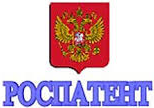When I was first in practice, many years ago, the only way to file a trademark application was on paper. Another way to say this is that the rate of e-filing was zero percent.
The US Trademark Office introduced trademark e-filing on March 20, 2000. The first-ever electronic US trademark application was filed at 10:30 AM on that day. Later that day, I launched the E-Trademarks listserv, an online community that continues to be very active now in 2018.
I did not have an opportunity to e-file a US trademark application for the first time until ten days later, on March 30, 2000.
Interestingly, in those early days the way that an electronically filed US trademark application got examined was that somebody at the Trademark Office printed it out on paper, and then the printout was injected into the workflow as if it had been paper-filed. It took almost a year for the Trademark Office to implement electronic workflow for the Examining Attorneys.
By now in 2018 the rate of e-filing, depending on your metric, is something in excess of 99%. But it seems that 99% is not good enough for the Trademark Office. The Trademark Office would like to eliminate that last 1%, as may be seen in the Federal Register notice of May 30, 2018. The Trademark Office proposes to mandate that only e-filing be used for trademark filings, thus eliminating the option of paper filing except in certain narrow situations.
When I was first in practice, pretty much the only way that a group of trademark practitioners could make their view heard in a rulemaking proceeding was through a professional or industry association such as INTA or AIPLA. In recent years, however, the E-Trademarks listserv has submitted comments. You can see comments that the listserv submitted in 2016. And just yesterday the E-Trademarks listserv submitted comments in the present rulemaking. You can see the comments here.


 WIPO is developing a new Global IP Platform or GIPP. The goal of the GIPP is to provide a personalized home page for a user of WIPO’s web site, with easy-to-find links to the various database and e-commerce systems provided by WIPO. The user can set up an array of widgets or tiles providing access to the particular databases and systems that are of interest to the user.
WIPO is developing a new Global IP Platform or GIPP. The goal of the GIPP is to provide a personalized home page for a user of WIPO’s web site, with easy-to-find links to the various database and e-commerce systems provided by WIPO. The user can set up an array of widgets or tiles providing access to the particular databases and systems that are of interest to the user. 

 When I founded our firm a quarter of a century ago, I did some of the things that were absolutely mandatory in those days, for example:
When I founded our firm a quarter of a century ago, I did some of the things that were absolutely mandatory in those days, for example: